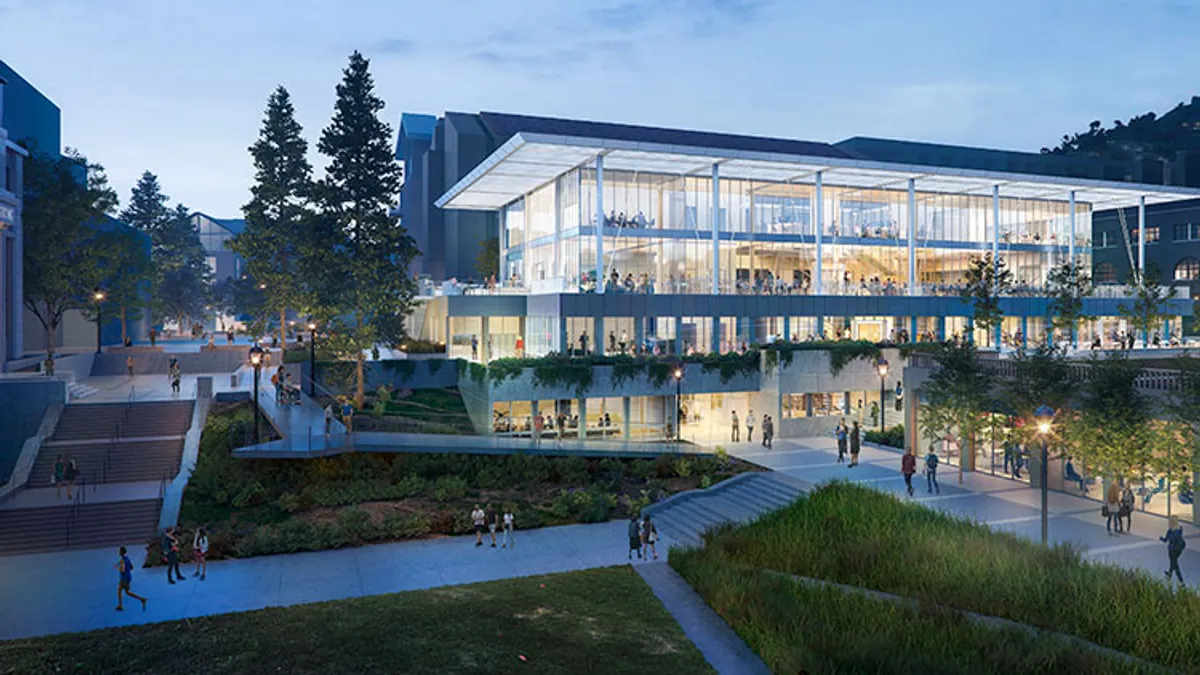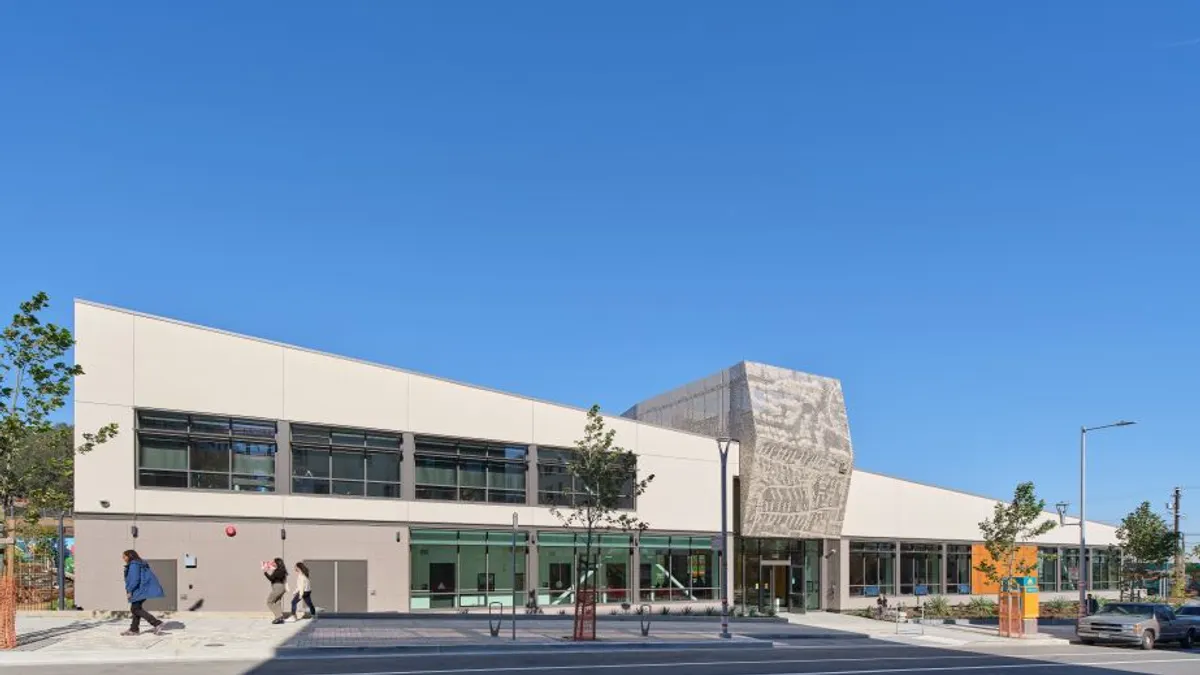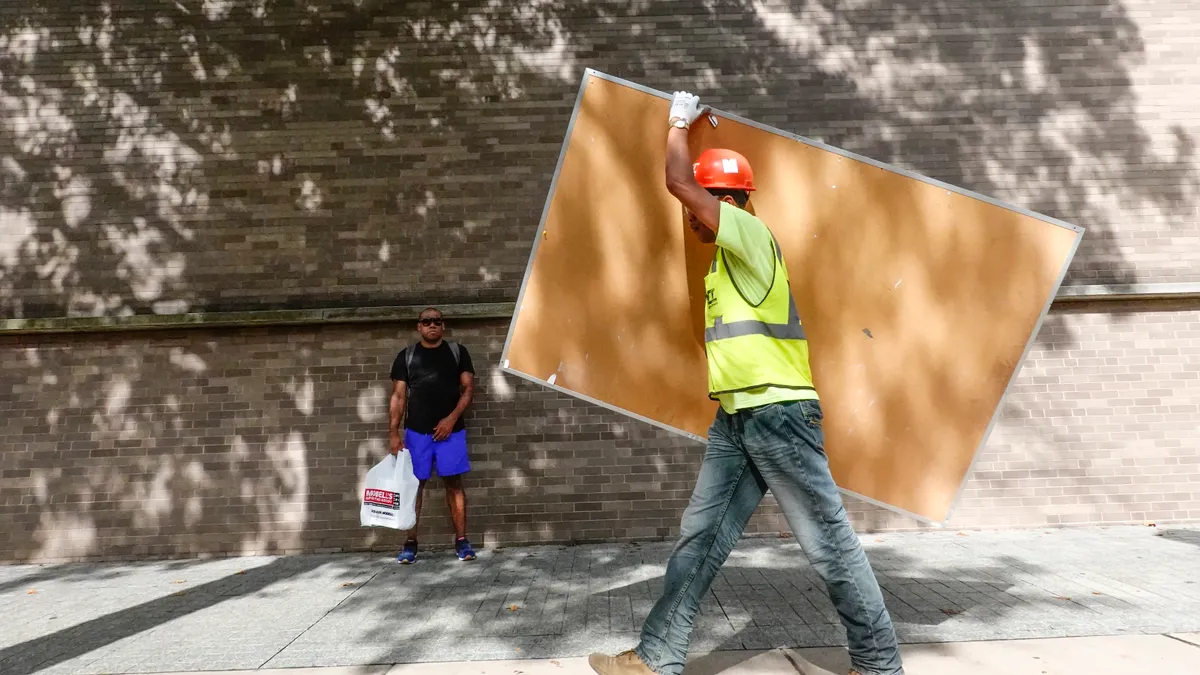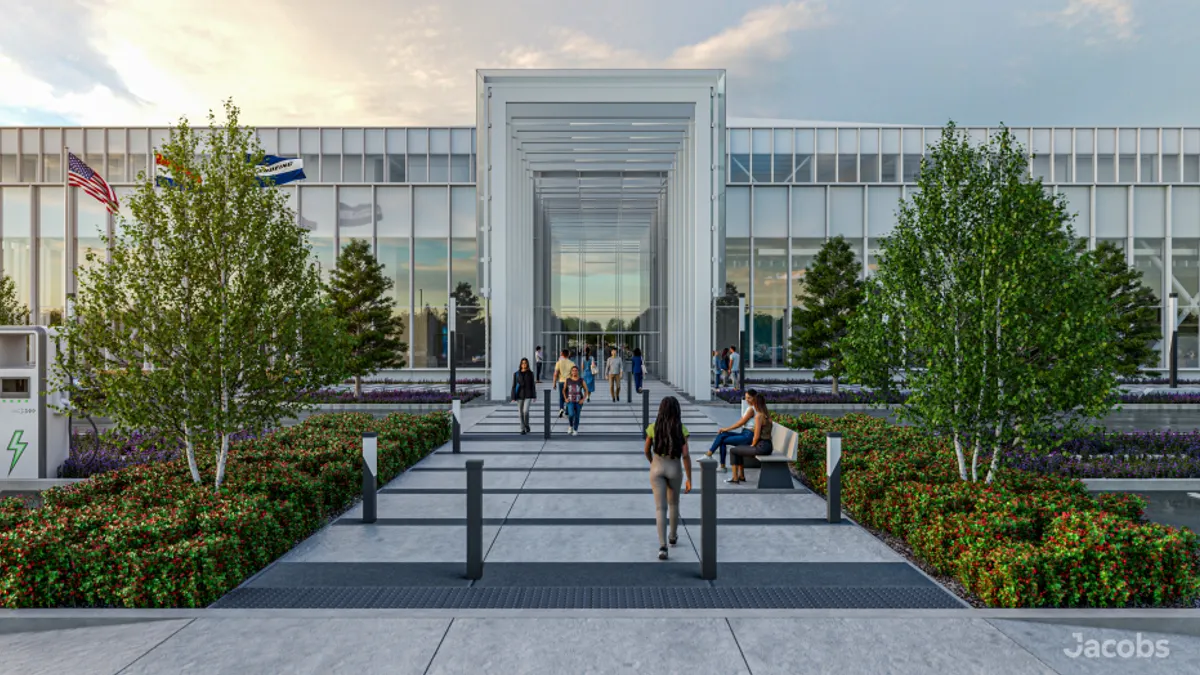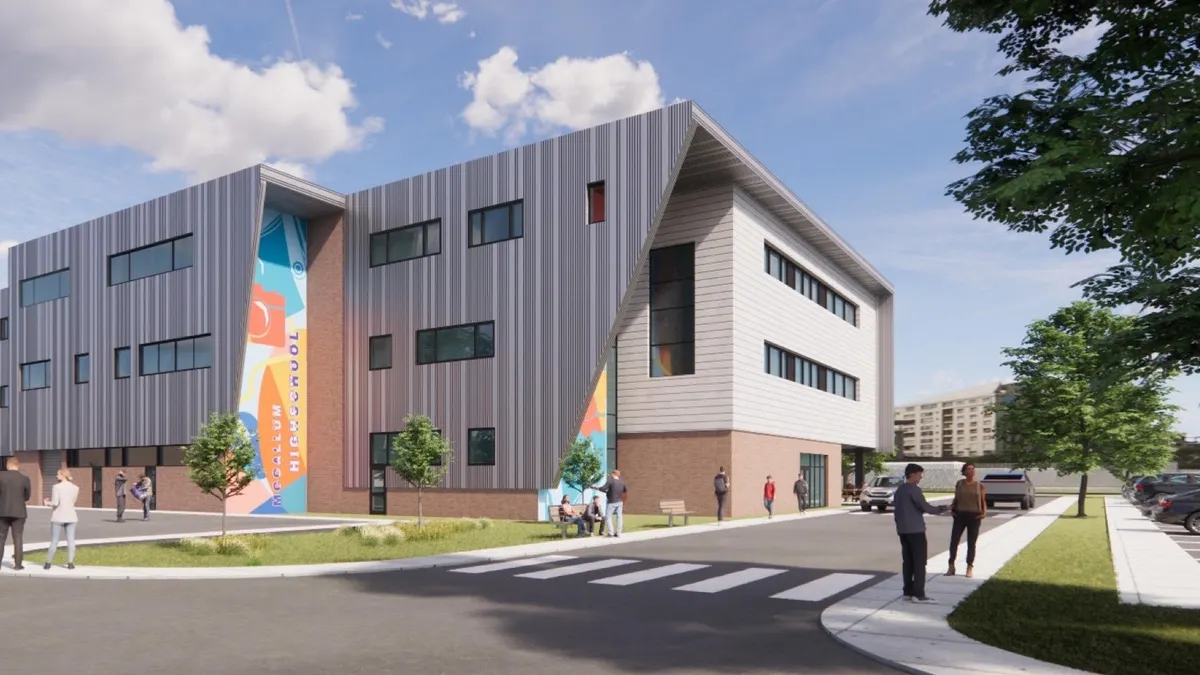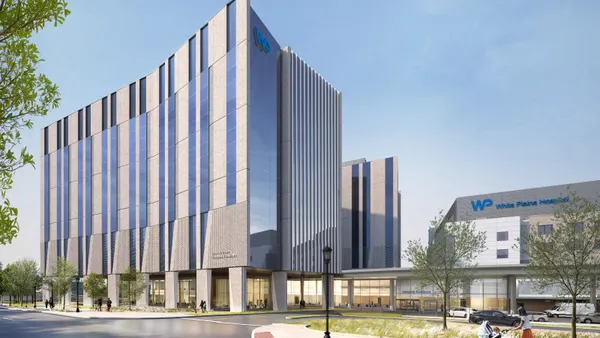More than 10 months since the first coronavirus cases were reported in Wuhan, China, COVID-19's global spread continues to plague commercial construction.
Since the pandemic hit the U.S., contractors across the country have faced a range of obstacles including layoffs, project shutdowns and increased construction costs.
As 2020 comes to a close, economists and industry experts predict many of these issues will continue to challenge contractors. Here are the top seven factors to watch:
Labor shortage. Pre-pandemic, the industry faced a historic shortage of skilled labor and the issue isn't going away just because COVID-19 has shut down projects and slowed others. Although firms have been calling back workers who were laid off in the spring, some have refused to return to work, citing a preference for unemployment benefits, virus concerns or family responsibilities.
Looking ahead to once a recovery begins, labor gaps might get even larger, especially in states like California, Texas and New York, according to Daniel Pomfrett, vice president of Los Angeles-based project management and cost consulting firm Cumming Corp. Lack of worker migration — especially to expensive markets with greater job opportunities like California and New York — also aggravates the labor shortage, Pomfrett said.
Shrinking backlog. Associated Builders and Contractors' Construction Backlog Indicator fell to 7.5 months in September, a decline of 0.5 months from August’s reading and 1.5 months lower than last year at this time. In addition, the association's Construction Confidence Index readings for sales and profit margins also decreased.
The months ahead don't look hopeful for contractors looking to add to their backlog of work, said ABC Chief Economist Anirban Basu in a release about the indicator.
“ABC’s survey data indicate that we are in the early stages of a nonresidential construction spending downturn,” he said. “With few exceptions, declines in backlog have begun to accelerate across all markets and regions.”
Falling construction costs. A variety of pandemic-related forces have caused construction costs to decline slightly for the first time in a decade, which could lead contractors to feel a pinch in profits.
The Turner Building Cost Index, which measures costs in the U.S. nonresidential building construction market, fell to a value of 1171 in the third quarter of 2020, a 1.5% quarterly reduction from the beginning of the year. This year marked the first time the index from Turner Construction has reduced in value since 2010.
“Trade contractor competition has increased in many areas as they work to secure backlog due to uncertainty they have about future opportunities," said Attilio Rivetti, the Turner vice president responsible for compiling the Cost Index in a press statement.
Less work. Various sectors of commercial construction will continue to experience a decline even after the rest of the economy begins to recover from COVID-19, economists say. For instance, experts predict people will continue to work from home more often then they go into a central office, so construction of office buildings remains a gray area in terms of future growth.
The construction of new healthcare facilities also could drop significantly because of changes in lifestyles post-COVID-19, according to Ken Simonson, chief economist for the Associated General Contractors of America.
“Hospital use dropped off drastically in the spring and it’s not certain if visits for elective surgery and other non-essential procedures will come back,” Simonson said. “Or will we see growth of alternative medical care through urgent care or surgery centers?"
He also questioned if nursing home construction would fall because people might be more hesitant to check themselves or family members into the facilities.
Travel and hospitality sectors, along with sports or performance venues, also look grim according to Simonson. That's primarily because their revenue sources — sales taxes, convention income and tolls — are taking a big hit and aren’t expected to get replenished anytime soon as the pandemic begins a third wave of intensity.
Price increases. This year has seen fluctuations in the prices of construction materials, most recently with the skyrocketing cost of lumber. Prices have been rising on most materials since May, according to ABC.
Its September look at prices found that among 11 subcategories, eight experienced monthly increases. As construction comes back online around the world, increasing demand for products could keep prices on the rise, Basu said.
"Despite the lingering pandemic, the global economy has been recovering, increasing demand for key commodities," he said. "Rapid viral spread, including in Europe and parts of North America, render materials shortages more likely during the winter months."
Some contractors are taking proactive steps to expand their supplier network as well as buying hedges on some materials to protect from upward price swings, according to Joe Natarelli, leader of the national construction industry practice at accounting firm Marcum.
Supply chain issues. "Production is getting back to where it was internationally,” Pomfrett said, “but the strain on supply chains and how to get materials and equipment delivered remains."
Natarelli said his clients are building resiliency into their supply chains so that they’re not beholden to a single supplier for any one material.
“The days of having one material supplier are gone,” he said. “We’re seeing clients setting up three separate suppliers, in different geographic locations, where in the past they may have had just one or two. Some are even getting as many as five in place.”
Plus, the pandemic caused a decline in shipping as well as air travel, which means less air freight gets moved so even the reduction in moving materials across state lines has caused issues, he said.
Diminished state and local government revenues. Basu said this is one of the top challenges facing contractors right now. A report from the Brookings Institution projects that state and local government revenues will decline $155 billion in 2020, $167 billion in 2021 and $145 billion in 2022 — about 5.5%, 5.7% and 4.7%, respectively — excluding the declines in fees to hospitals and higher education.
This means that state agencies such as departments of transportation have less money to fund infrastructure initiatives like roads, bridges and transit projects. Many will look to the federal government for additional revenue.
At the New York Metropolitan Transportation Authority, some upcoming projects are in limbo as the authority awaits word on whether it will receive federal funding in addition to the $3.8 billion it received in April under the Coronavirus Aid, Relief and Economic Security Act. Industry estimates show that even with the CARE Act funds, the MTA faces at least an $8.5 billion shortfall for 2020 and 2021.
“MTA’s financial position has eroded dramatically” since the outbreak began, Janno Lieber, MTA chief development officer said this summer, noting that the authority is losing about $800 million a month in revenue due to the crisis.







